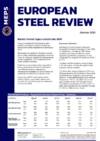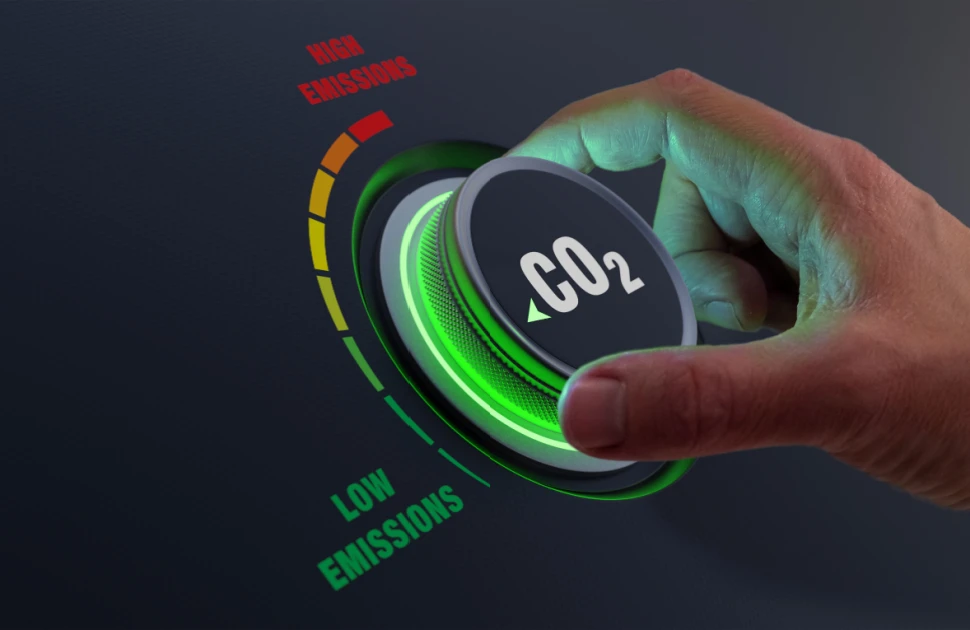EU CBAM’s default carbon emissions values published
Steel importers and producers are being urged to “get their house in order” following the publication of default embedded carbon emissions values and other key updates to the EU CBAM.
Businesses preparing to submit their first CBAM report, which will detail the embedded emissions of steel products imported into the EU between October 1 and December 31 last year, are likely to rely on the European Commission's default values in their calculations.
A study conducted by the Commission’s Joint Research Centre (JRC) considered carbon emissions from the production of a wide range of steel products in 15 to 20 countries to settle on a ‘world average’ figure for each.
This value can be used by importers and steelmakers to calculate the CO2 emissions per tonne embedded in products shipped into the EU, which must be reported under CBAM.
Default values’ limited application
However, the use of the default carbon emissions values for businesses’ full import volume will only be permitted until the end of June 2024.
MEPS International steel market analyst Jonathon Carruthers-Green explained: “From quarter three this year, estimates and default values can only be used for complex goods. Even then, they can only be applied if these estimations represent less than 20% of the total embedded emissions.
“From 2026, when the CBAM regulation is fully implemented, importers will have to declare the quantity of goods imported into the EU in each preceding year and calculate their embedded emissions using the Commission’s EU methodology.
“Put simply, steel traders need to get their house in order and ensure that they can accurately assess and report the embedded emissions of goods, in order to avoid potential fines, in the medium term.”
The EU CBAM methodology dictates that imported steel products’ embedded emissions are established through the accurate monitoring of production processes, mirroring those used in the EU Emissions Trading Scheme (EU ETS).
The European Commission’s newly published default emissions will not apply from 2026 onwards. Another set of default values will be introduced, setting the average emission intensity of each exporting country.
Cost of CBAM
During the CBAM transition period, which runs from October 1, 2023, to December 31, 2025, the Commission’s focus is on establishing a reporting process. Nonetheless, penalties of EUR10 to EUR50 per tonne of CO2 emitted can be levied for incomplete or incorrect reporting.
The EU CBAM will run alongside the EU ETS for the duration of the transition period. After this time, free ETS allowances will be phased out and the direct embedded emissions in imported steel will be paid for through the purchase of CBAM certificates.
The price of CBAM certificates will be calculated depending on the weekly average auction price of EU ETS allowances.
Research conducted for MEPS International’s monthly European Steel Review revealed that, even before the implementation of the new pricing model, importers and producers were experiencing the cost implications of CBAM.
While some businesses have employed additional staff to take on the administrative burden of CBAM reporting, others have appointed an indirect customs representative to fulfil their obligations.
Commission’s simplification measures
The European Commission’s latest clarification on the CBAM transition period has introduced measures to simplify the reporting process.
Among the updates to its dedicated online reporting tool, the CBAM transitional registry are:
- Option for recording emission data of a specific good to be reused in subsequent reports (feasible from the second quarterly report in April 2024).
- Option for reconducting the previous report updating the imported quantities.
- Option for reporting data based on an XML file to allow reporting declarants to automate their process to reuse previous report's data whenever appropriate.
- Clarification that, for operators, the default reporting period is twelve months to allow them to collect representative (carbon emissions) data that reflects an installation’s annual operations. The 12-month reporting period may be either a calendar year or a fiscal year. However, operators may also choose an alternative reporting period, of at least three months, if the installation participates in an eligible MRV system and the reporting period coincides with the requirements of that MRV System.
A webinar offering insight into the EU’s new, emissions-based import regulations can be viewed on demand via MEPS International. Carruthers-Green hosted the Understanding CBAM webinar as part of a partnership with the British Stainless Steel Association (BSSA).
To access the European Commission’s latest CBAM documentation and formal guidance, visit its online portal.

Source:
European Steel Review
The MEPS European Steel Review is an informative, concise and easy-to-use monthly publication, offering unique professional insight into European carbon steel prices.
Go to productRequest a free publication





